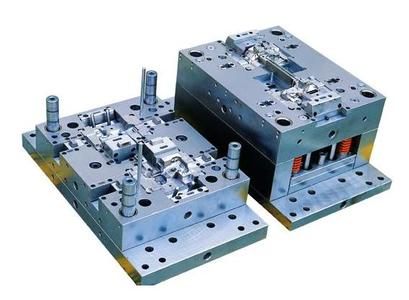 There are many kinds of plastic products that have bad appearances, and the reasons are also very complex. There are reasons for molds, and there are also reasons for the process conditions. The two are often handed over together. Before repairing the mold, careful analysis and study should be conducted according to the actual conditions of the plastic parts, and the remedial measures should be proposed after finding out the cause of the defects of the plastic parts. Because the molding conditions are easy to change, the general practice is to first change the molding conditions. When changing the molding conditions does not solve the problem, it is considered to repair the mold. "Mold has an extremely important role in modern industry. Its quality directly determines the quality of the product. Improving the service life and accuracy of the mold. Shortening the manufacturing cycle of the mold is a technical problem that many companies need to solve urgently, but during the use of the mold. There are often forms of failure such as falling, deformation, wear, or even breaking."
There are many kinds of plastic products that have bad appearances, and the reasons are also very complex. There are reasons for molds, and there are also reasons for the process conditions. The two are often handed over together. Before repairing the mold, careful analysis and study should be conducted according to the actual conditions of the plastic parts, and the remedial measures should be proposed after finding out the cause of the defects of the plastic parts. Because the molding conditions are easy to change, the general practice is to first change the molding conditions. When changing the molding conditions does not solve the problem, it is considered to repair the mold. "Mold has an extremely important role in modern industry. Its quality directly determines the quality of the product. Improving the service life and accuracy of the mold. Shortening the manufacturing cycle of the mold is a technical problem that many companies need to solve urgently, but during the use of the mold. There are often forms of failure such as falling, deformation, wear, or even breaking." Luo Baihui, a mold specialist, said that there are many ways to repair molds, such as EDM, argon arc welding, laser surfacing, and brush plating. The argon arc welding repair uses the arc that is continuously fed between the welding wire and the workpiece as a heat source, and the gas sprayed from the torch nozzle protects the arc for welding. At present, argon arc welding is a common method and can be applied to most major metals including carbon steel and alloy steel. Dissolved inert gas shielded welding is applicable to stainless steel, aluminum, magnesium, copper, titanium, zirconium, and nickel alloys. Due to its low price, it is widely used for mold repair welding. However, welding heat affects the area and solder joints are shortcomings. Precision mold repair has been gradually replaced by laser welding. The brush plating repair brush plating technology adopts a special DC power supply device. The positive electrode of the power supply is connected with the plating pen as the anode during brush plating; the negative electrode of the power supply is connected to the workpiece and used as a cathode during brush plating. The plating pen usually adopts high purity. The fine graphite block serves as the anode material, and the graphite block is wrapped with cotton and a wear-resistant polyester cotton sleeve.
During operation, the power supply assembly is adjusted to an appropriate voltage, and the plating solution is applied to the surface of the surface of the repaired workpiece at a certain relative movement speed. The metal ions in the plating solution diffuse to the workpiece under the action of the electric field force. On the surface, the electrons are reduced to metal atoms on the surface, so that these metal atoms deposit crystals to form a plating layer, that is, a desired uniform deposition layer is obtained on the working surface of the plastic mold cavity to be repaired. Laser welding welding laser welding is the use of high-power coherent monochromatic photon flux focused laser beam as a heat source for welding. This welding method usually has continuous power laser welding and pulsed power laser welding. The advantage of laser welding is that it does not need to be performed in a vacuum. The disadvantage is that the penetration force is not as strong as electron beam welding. Laser welding enables precise energy control and therefore allows the soldering of precision devices. It can be applied to many metals, in particular to the welding of difficult-to-weld metals and dissimilar metals.
Has been widely used for mold repair. Optical welding is the use of high power coherent monochromatic photon flux focused laser beam as a heat source for welding. This welding method usually has continuous power laser welding and pulsed power laser welding. The advantage of laser welding is that it does not need to be performed in a vacuum. The disadvantage is that the penetration force is not as strong as electron beam welding. Laser welding enables precise energy control and therefore allows the soldering of precision devices. It can be used for many metals, in particular, it can solve the welding of some hard soldering metals and dissimilar metals. Has been widely used for mold repair.
Sulphate Chemicals,Ferrous Sulphate,Ferrous Sulphate Salt,Magnesium Sulphate Powder
SHANDONG ALIVAN CHEMICAL TECHNOLOGY CO.,LTD. , https://www.alivanchem.com